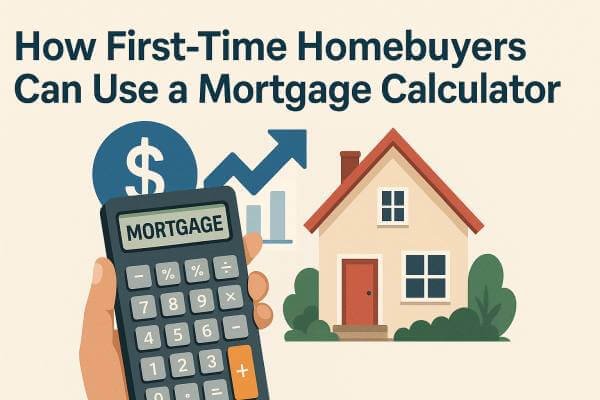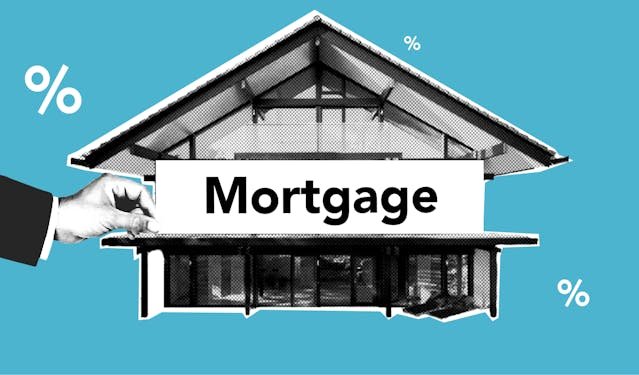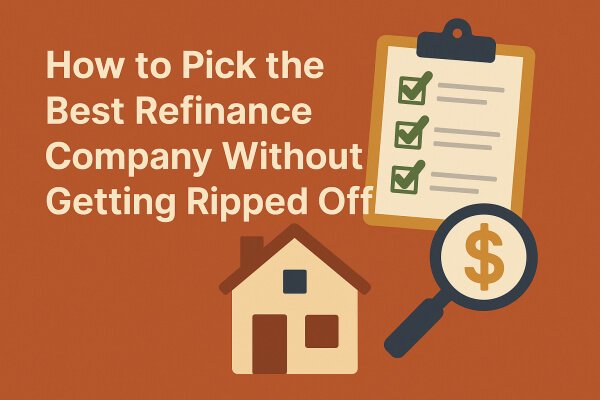Difference Between a “Mortgage Agreement In Principle” and a “Mortgage Offer”

Are you contemplating a home purchase and struggling to understand the distinction between a mortgage agreement in principle and a complete mortgage offer?
During the mortgage process, there is frequent confusion between these two terms. Understanding the meaning of each term and their respective roles can significantly streamline the homebuying process.
In this article, we’ll break down what a mortgage agreement in principle really is, how it compares to a full mortgage offer, and why it matters for your approval chances.
Whether you’re a first-time buyer or just need a refresher, we’ll walk through each stage in detail. Let’s clear things up and help you move one step closer to getting those keys in hand.
What Is a Mortgage Agreement in Principle?
A mortgage agreement in principle (sometimes called a decision in principle or mortgage in principle) is basically a lender’s way of saying, “Yeah, based on what you’ve told us, we might be able to lend you this much.” It’s not a promise, but it’s a helpful first step that shows you’re serious about buying.
To get one, you usually give the lender some basic info like your income, expenses, and credit details. They’ll often run a soft credit check, which doesn’t affect your credit score. Based on that, they’ll tell you how much they could offer you in a mortgage.
Why does this matter? Well, estate agents and sellers like seeing a mortgage in principle. It shows them you’ve got your finances in order and that you’re not just window shopping. Some property viewings even require you to have one before you walk through the door.
But keep in mind, a mortgage agreement in principle is not the same as a full mortgage offer. It’s a quick snapshot, not a final decision. You haven’t applied for the actual mortgage yet, and nothing is guaranteed at this stage.
What’s a Full Mortgage Offer?
A full mortgage offer represents the genuine deal. This is the official document from your lender, confirming that they’ve checked everything and are ready to give you the money.
To get to this stage, you’ll need to go through a full mortgage application. That means submitting all the paperwork: payslips, bank statements, proof of ID, details about the property, and anything else the lender asks for. They’ll also do a thorough credit check and usually arrange a valuation on the home to make sure it’s worth the price.
Once everything checks out, they’ll issue the full mortgage offer in writing. This is a binding offer (usually valid for around three to six months), and it means you can move forward with confidence. You’re now one big step closer to exchanging contracts and getting the keys.
If the mortgage agreement in principle is like dipping your toe in the water, the full mortgage offer is the moment you jump in. This is your lender’s official approval.
Mortgage Agreement in Principle vs. Full Mortgage Offer: What’s the Difference?
On the surface, they might seem similar; they both involve a lender looking at your financial situation. But in reality, they’re used at totally different stages, and they carry very different weight.
Here’s a simple breakdown to make it clear:
| Feature | Mortgage Agreement in Principle | Full Mortgage Offer |
| Is it legally binding? | No | Yes |
| When do you get it? | Early in your home search | After submitting a full mortgage application |
| What’s it based on? | Basic financial info and a soft credit check | Full credit check, documents, and property valuation |
| How long does it last? | Usually 30 to 90 days | Usually 3 to 6 months |
| Can it be withdrawn? | Yes, easily | Rarely, unless something major changes |
A mortgage agreement in principle is a rough estimate. It’s helpful when you’re house-hunting because it shows sellers and estate agents that you’re serious.
A full mortgage offer, on the other hand, is the official approval from your lender. This is what you need to do to actually buy the home.
The key takeaway is that you need both, but at different times.
Why Both Stages Matter in the Home Buying Process
You may be wondering, “Is it necessary to have both a mortgage agreement in principle and a full mortgage offer?” The answer is yes. Each one plays a unique role, and skipping either can slow you down or, worse, cause problems later on.
The mortgage agreement in principle is super useful early on. It helps you figure out how much you could borrow, which means you can start house hunting with a realistic budget. It also gives estate agents confidence that you’re a serious buyer. Some lenders won’t even allow you to view a property without a full mortgage offer.
Once you find a place you love and have your offer accepted, you then move on to the full application. That’s where the full mortgage offer comes in. This document is your lender’s official approval, and it’s what you’ll need to exchange contracts and actually buy the home.
Without a mortgage in principle, you might waste time looking at homes that are way out of your budget. Without a full offer, you can’t move forward with the purchase, even if your offer on the property gets accepted.
Common Misconceptions About Mortgage Agreements and Full Offers
Let’s clear up some of the most common myths people run into when dealing with a mortgage agreement in principle and a full mortgage offer. These mix-ups can lead to confusion or even big delays, so it’s beneficial to know the facts upfront.
“If I have a mortgage in principle, I’m guaranteed the mortgage.”
Not quite. A mortgage in principle is based on limited information and a soft credit check. It’s not a promise. The lender still needs to review your full financial history and inspect the property before extending a formal offer.
“They’re the same thing.”
Nope. The agreement in principle is a quick estimate. The full mortgage offer is an official, binding approval. If you don’t know this difference, you may think you’re further along than you are.
“I don’t need a mortgage in principle if I know what I can afford.”
Despite your own financial calculations, a mortgage in principle signals to sellers and agents that a lender is tentatively supporting you. It gives your offer more weight in a competitive market.
“Once I have a full offer, nothing can go wrong.”
While rare, things can still fall through, like if your job situation changes or the property has issues during legal checks. But compared to an agreement in principle, a full offer is much more solid.
How to Go from Mortgage Agreement in Principle to Full Mortgage Offer
Getting from a mortgage agreement in principle to a full mortgage offer isn’t as complicated as it sounds. It’s like moving from the “maybe” stage to the “yes, here’s your loan” stage. Here’s how the process typically plays out:
1. Get your mortgage agreement in principle
Start by contacting a lender or broker. They’ll ask for basic info like your income, outgoings, and any existing debts. They’ll run a soft credit check and tell you how much you could likely borrow.
2. Start house hunting
Now that you’ve got an idea of your budget, you can view properties with confidence. Most agents will take your offer more seriously if you have a mortgage in principle in hand.
3. Make an offer on a property
Once you find the right home, you make your offer. If your offer receives acceptance, you must promptly initiate your full mortgage application.
4. Submit your full mortgage application
This step is more detailed. You’ll need to provide documents like payslips, tax returns, ID, and bank statements. The lender will do a thorough credit check and fully assess your financial situation.
5. Property valuation and underwriting
Your lender will arrange a property valuation to make sure the home is worth what you’re paying. Then the underwriter will review everything to make the final decision.
6. Receive your full mortgage offer
If everything checks out, the lender will issue a full mortgage offer. This is the formal, binding document confirming how much they’re willing to lend and under what terms. At this point, you’re nearly ready to exchange contracts and move forward with the purchase.
Each of these steps builds on the one before it. Skipping ahead or missing something can slow things down. However, maintaining control over the process can ensure a smooth transition from a mortgage in principle to a full offer.
Final Thoughts
Understanding the difference between a mortgage agreement in principle and a full mortgage offer isn’t just about learning the lingo. It’s about knowing where you stand in the homebuying journey and what steps come next.
A mortgage in principle helps you get started, showing sellers you’re serious and giving you a clear budget. However, it’s the complete mortgage offer that truly matters when it’s time to finalize the transaction.
If you are just beginning, please consider obtaining that agreement in principle. It is an excellent initial step. And when you find the right home, be ready to dive into the full application process.
Buying a home is a big step, but knowing the difference between these two key stages makes the whole thing a lot less overwhelming.
FAQs
1. Is a mortgage agreement in principle the same as a mortgage offer?
No. A mortgage agreement in principle is a rough estimate based on basic financial info. A full mortgage offer is a formal, binding commitment from your lender after a complete application.
2. Does getting a mortgage in principle affect my credit score?
Usually not. Most lenders do a soft credit check for a mortgage in principle, which won’t impact your score. But a hard credit check is done during the full mortgage application.
3. How long does a mortgage agreement in principle last?
It typically lasts between 30 and 90 days, depending on the lender. You can renew it if it expires before you find a property.
4. Can I be declined after getting a mortgage in principle?
Yes. A mortgage in principle is not a guarantee. Lenders may still decline your full application based on deeper checks or the property itself.
5. What documents do I need for a full mortgage offer?
You’ll usually need:
- Proof of ID and address
- Recent payslips or tax returns
Bank statements - Details of the property
- Proof of deposit
























